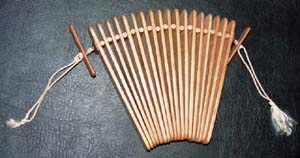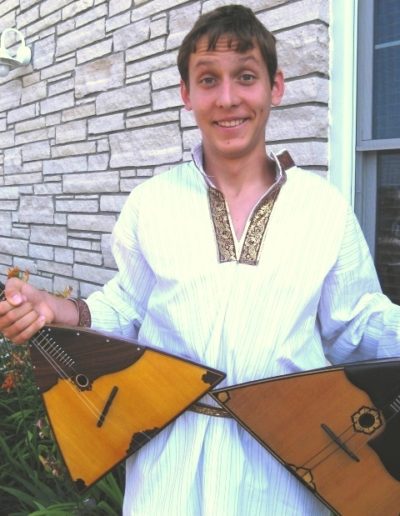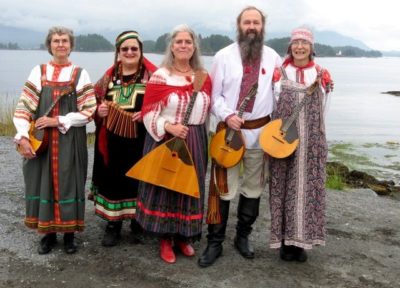Eastern European
Folk Instruments
The folk instruments unique to Eastern Europe include the balalaika, domra, bayan, gusli, and traditional wind & percussion instruments.
Balalaika
The balalaika is the most well-known string instrument of the region, with its characteristic triangular shape. It has a wooden hollow body, a fretted neck and three strings. Two strings are usually tuned to the same note and it is tuned in fourths. Some are played with fingers, while others are played with picks. Balalaikas can play melody, chords, or accompaniment and come in a range of sizes from the highest-pitched prima balalaika to the lowest-pitched contrabass balalaika.
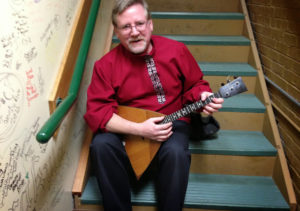
Prima Balalaika
- Smallest, high-pitched, most common
- Played with fingers
- Plays melody / lead notes
Secunda & Alto Balalaika
- Medium-sized, mid-range pitch
- Uses fingers or pick
- Plays accompaniment parts
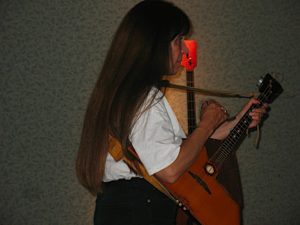
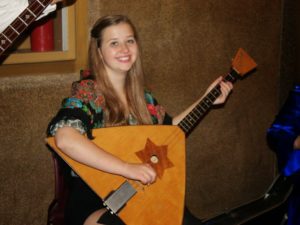
Bass Balalaika
- Larger, deep pitch
- Played sitting
- Played with leather pick
Contrabass Balalaika
- Largest, deepest pitch
- Played standing
- Played with leather pick
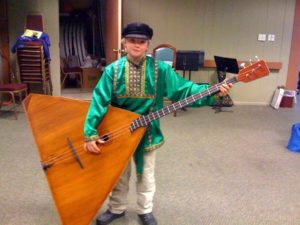
Domra
The domra is the lesser-known (but equally-loved!) string instrument with a distinctive round shape. It also has a wooden hollow body, a fretted neck and 3 (Russian version) or 4 (Ukrainian version) strings that are tuned in fourths or fifths, respectively. Domras are similar to mandolins and are all played with picks. Domras mostly play melody, but also can play harmony and accompaniment. Domras come in a range of sizes from the highest-pitched prima domra to the lowest-pitched contrabass domra.
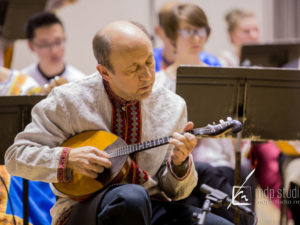
Prima Domra
- Small, high-pitched, most common
- Similar to violin in an orchestra
- Plays melody notes
Alto & Tenor Domra
- Medium-sized, mid-range pitch
- Similar to viola in an orchestra
- Plays harmony parts
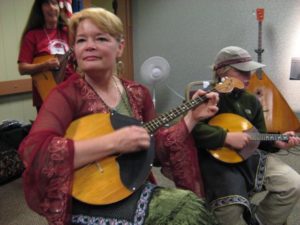
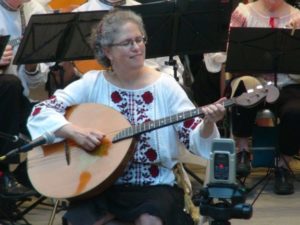
Bass Domra
- Larger, deeper pitch
- Similar to cello in an orchestra
Contrabass Domra
- Largest
- Played sitting
- Exceptionally rare
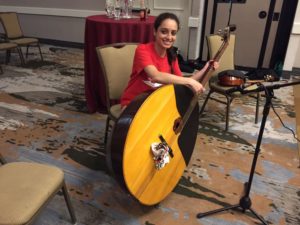
Bayan & Gusli
The bayan is a chromatic button accordion unique to the Slavic countries. Although it is similar to an accordion, the piano keys are replaced by buttons and the tone is quite different, with a fuller bass sound and a larger overall range. Gusli most closely resembles a table version of the auto harp. It is played with a pick and uses a set of piano keys to form chords.
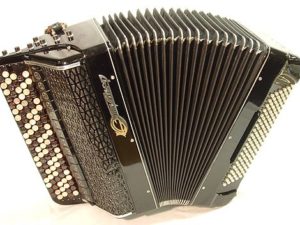
Bayan
- Reed instrument similar to accordion
- Buttons, not piano keys
Gusli
- Table-top auto harp
- Played sitting with a pick
- Part of the zither family
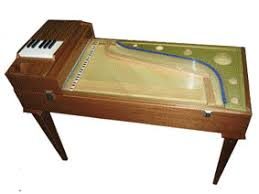
Traditional Wind & Percussion
The Slavic countries have a wide breadth of traditional wind and percussion instruments. Wind instruments include the folk clarinet called zhaleika, bagpipes known as volynka, and folk trumpets called rozhok. Percussion instruments include the treshchotka, wooden spoons (lozhki), buben, tambourines, and many others.
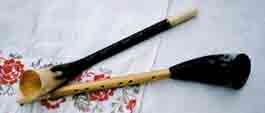
Zhaleika
- Folk clarinet / hornpipe
- Single reed with wooden pipe and finger holes
- Piercing kazoo sound
Treshchotka
- Percussion “clapper”
- Small boards on a string that hit each other
- Held together like a fan
